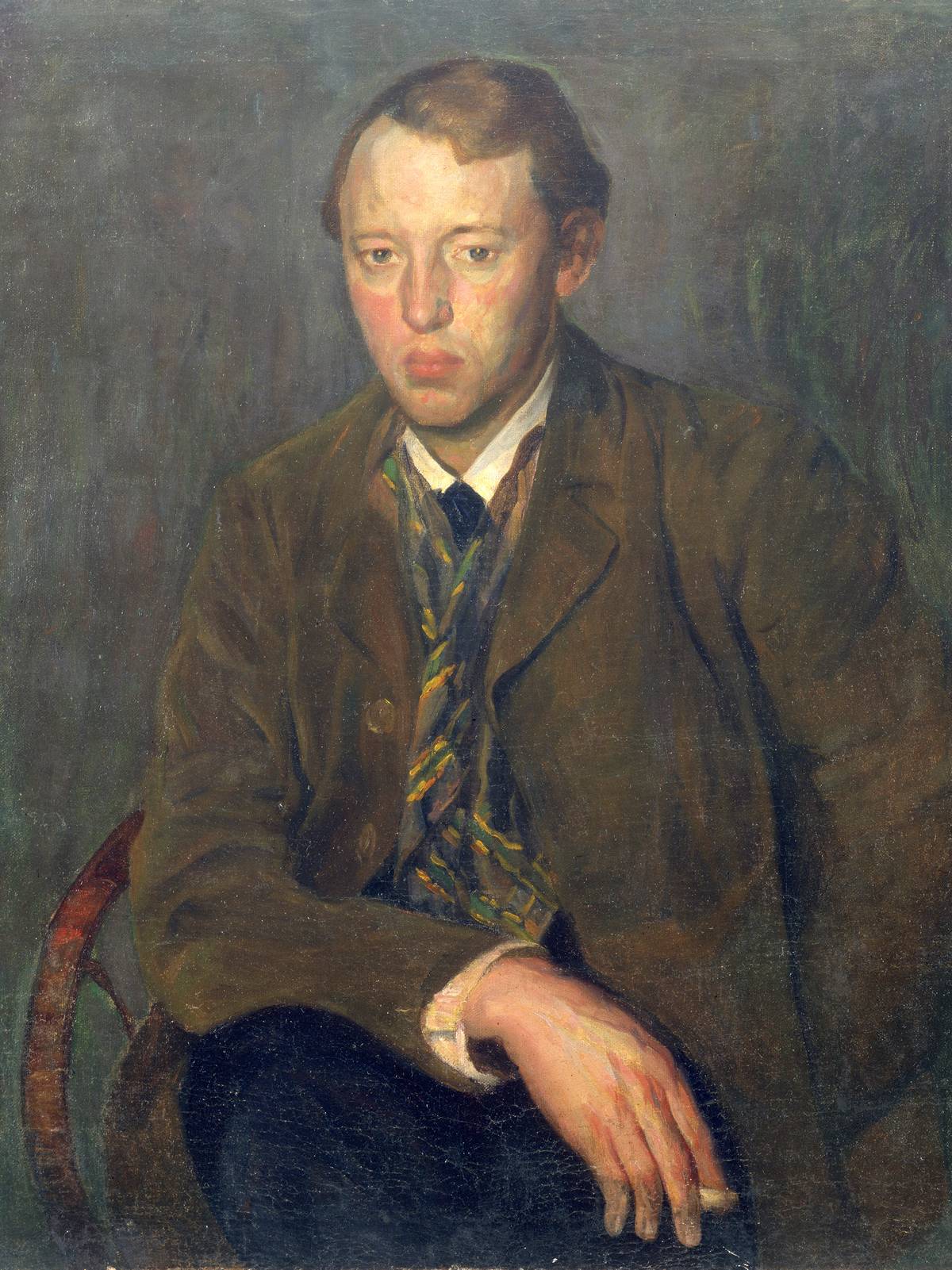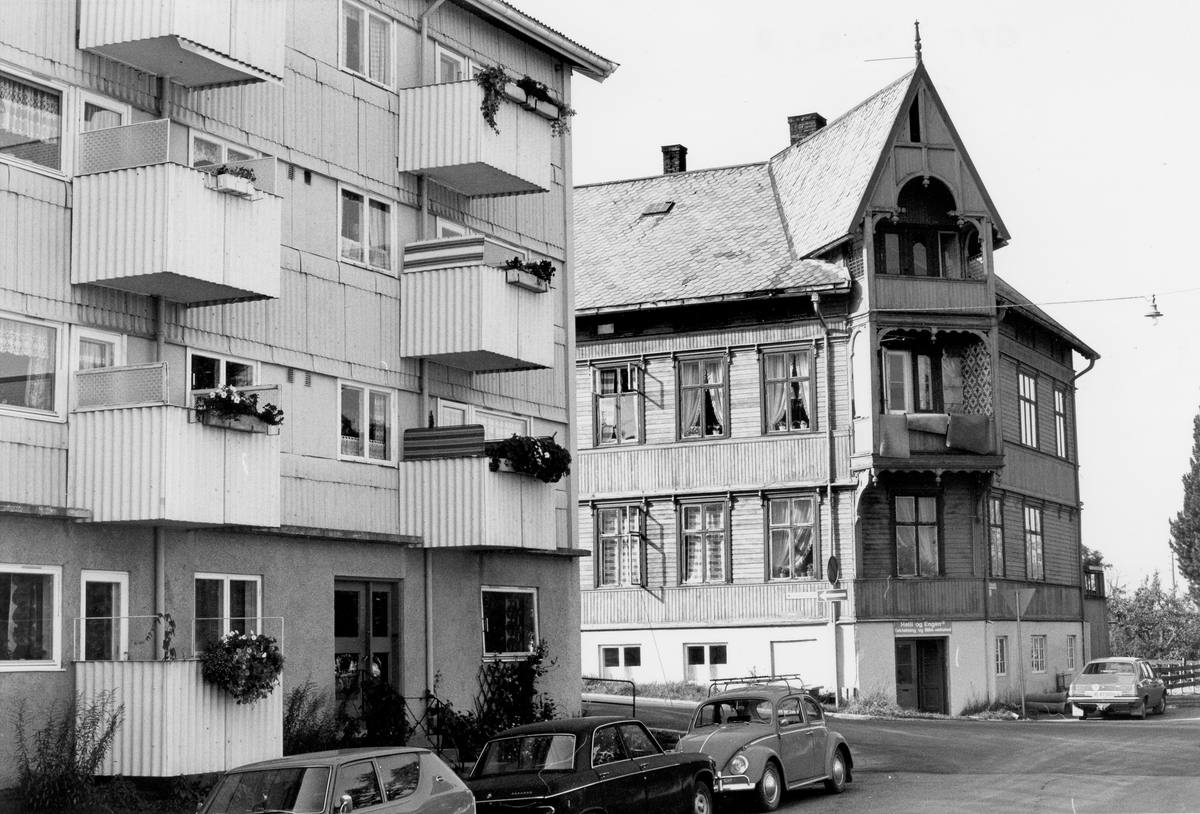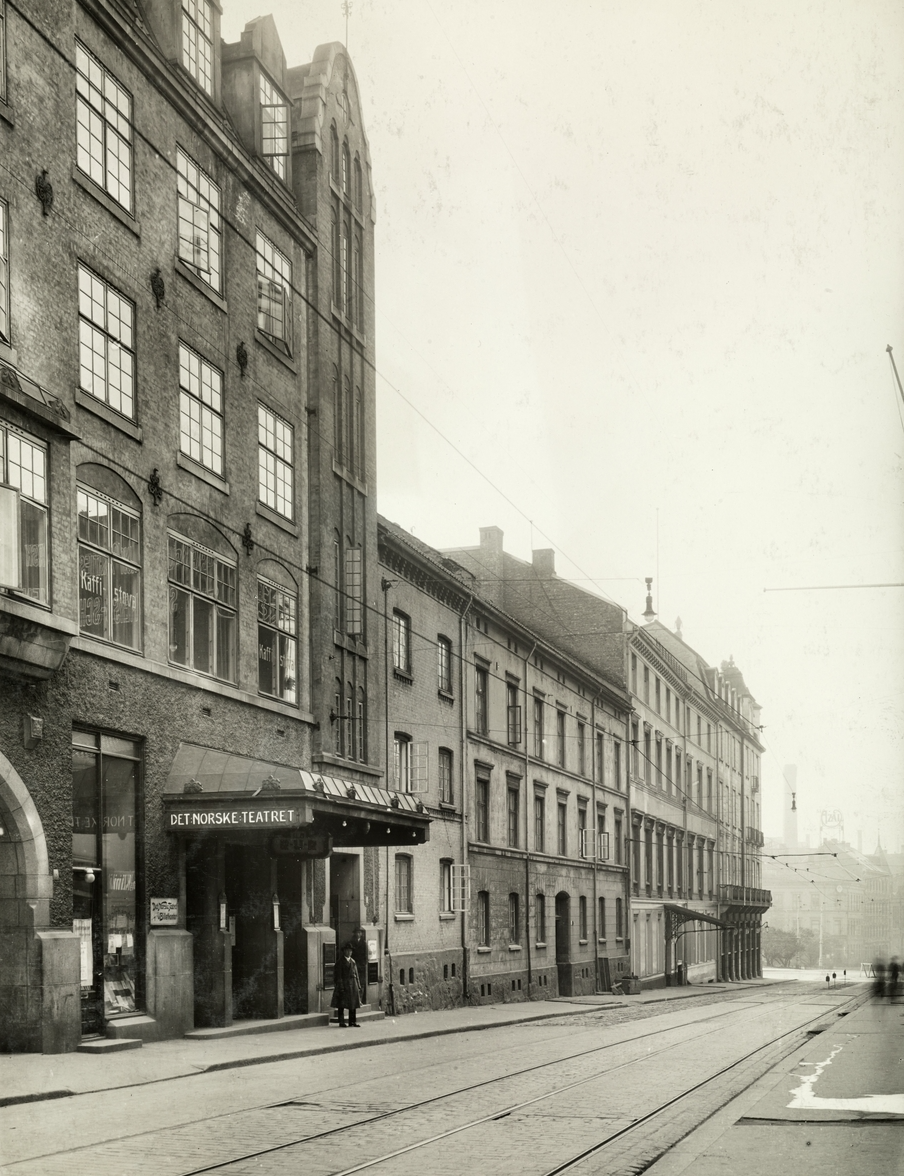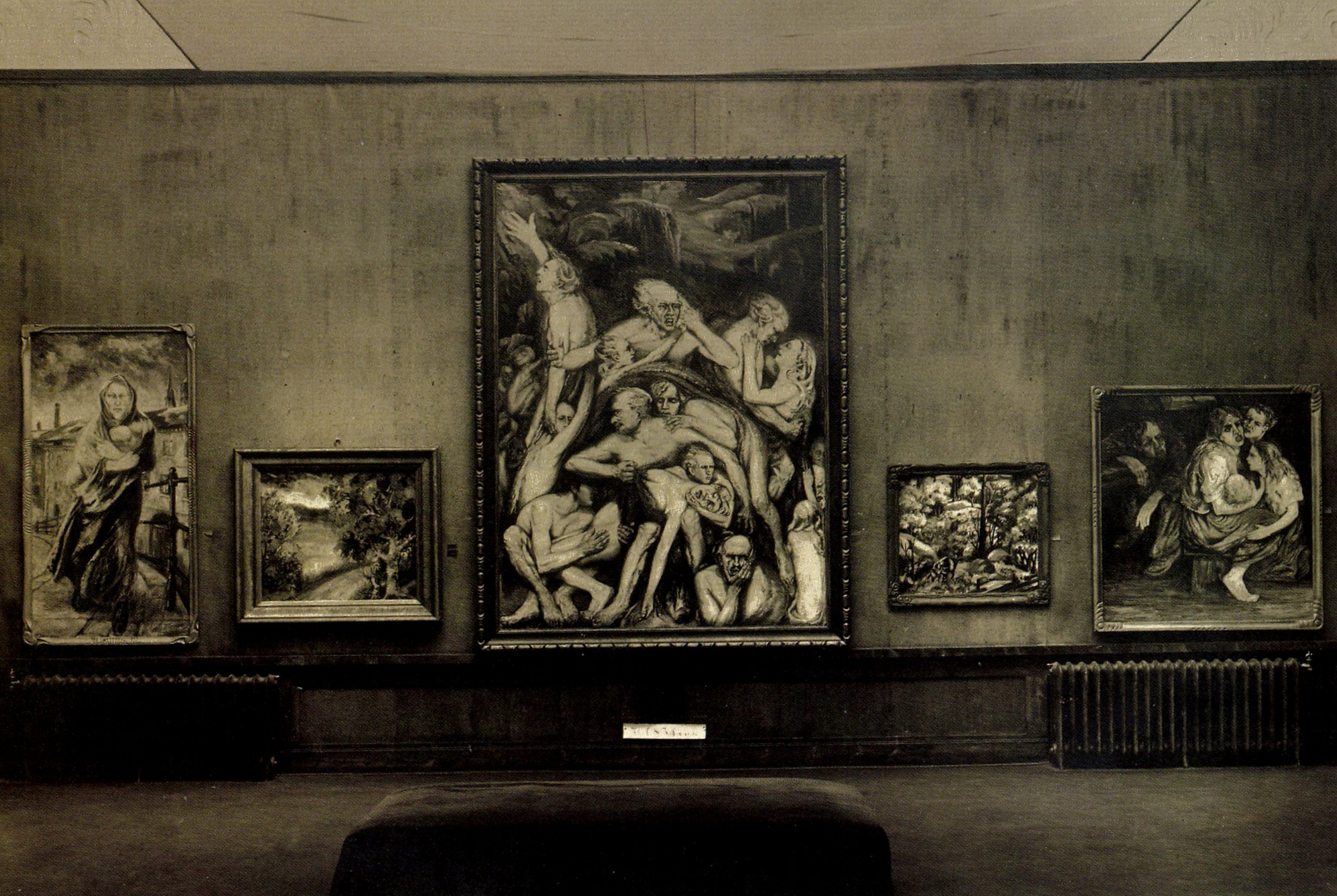5 minutes
Aksel Waldemar Johannessen
Aksel Waldemar Johannessen (1880-1922) was a Norwegian expressionist, painter, and graphic designer. In Norway he is often referred to as “the forgotten artist” and was only praised by critics after his death. Johannessens art was noticed by Edvard Munch and two famous art critics at the time, Dagbladet’s Jappe Nilssen and the cultural profile Olav Dalgard.

Self-portrait of Aksel W. Johannessen. Public domain, CC0.
Early life and education
Aksel Waldemar Johannessen was born October 26, 1880 in Christiania (today Oslo), Norway. He grew up at Kampen, where his father, Julius Johannesen, was a shoemaker and auxiliary policeman. He was connected early to the artist community at Hammersborg behind the Trinity Church. In the period of 1900 and 1907, he become educated as an artist, including seven semesters at the Norwegian National Academy of Craft and Art Industry, the last years with Lars Utne in the sculptor class. He learned the art of woodcarving in the workshop of the internationally famous Johan Borgersen.
Work in Gjøvik
Johannessen married Anna Gjermine Nilsen in 1907, and their relationship resulted in two daughters. They moved to Gjøvik the same year, where he worked as a cabinetmaker and woodcarver in the company Edvard Sandvold. He lived at Sandvoldgård in Welhavens street. Johannessen did not paint at this time, but he made a number of sculptures. They lived in Gjøvik until 1912.[1]

Sandvoldgården where Johannessen lived in Gjøvik. Image from 1979. Krogstad, Morten / Mjøsmuseet, CC BY-NC 4.0.
Returning to Kristiania
The couple moved back to Kristiania in 1912, he and his wife Nilsen came into close contact with the theater community and the social circle around Hulda and Arne Garborg. The couple founded a dressmaking shop named Heimen Teiknekontor. It became a permanent sewing room for the Norwegian Theatre, which was founded in 1913, and Johannessen became a stage worker for the theater. He participated in the infamous theater group after the first performance: “Jeppe paa Berget” by Ludvig Holberg. In Heimen’s sewing room, the first interest in the Norwegian folk costumes also began to emerge, which led to the reconstruction of the Valdres costume/bunad and the Gudbrandsdal costume/bunad. Johannessen began painting in 1912, although his work as a painter remained for the most part unnoticed by those around him. Throughout his life, Johannessen seemed to distance himself from the rather bourgeois and snobbish artistic community.

The Norwegian Theatre (1915). Væring, Ragnvald, CC BY-SA 4.0
Death
At times had Johannessen alcohol problems, and from 1918 to 1921 was he in a very rough period. An attack of pleuresy in his youth had left him in delicate health. In 1922, was his wife, Nilsen, sick with incurable cancer. In sheer despair was Johannessen unable to control his alcohol consumption. He was found in the gutter of an alley, driven to Ullevål University Hospital, where the terminally ill Nilsen was sitting next to him when he died of pneumonia at the age of 42 on October 25, 1922.
At the time of Johannessen’s death, his wife Nilsen had only four months left to live. During this brief space of time, his wife set about to tidy up both her own life and that of her husband. Assisted by Hulda Garborg, she saw to it that her two daughters were well taken care of, and she sold the company “Heimen” to Bondeungdomslaget (the Society of Farm Youth) in 1923 for a purchase sums of about NOK 25,000, which at that time corresponded to 12-13 annual salaries.[2] She also contacted the artist Ola Abrahamsson, showing him the ninety works that Aksel Waldemar had painted, without making this known to anyone.
Memorial exhibition
The painter Ola Abrahamsson made sure that the about 90 leftover canvases of partly large format were shown at a memorial exhibition at Blomqvist in January 17, 1923.
The exhibition of these works of art created an overwhelming response with magnificent reviews, although a number of people did not comprehend the direct, realistic messages of his art. Jappe Nilssen, Norway’s foremost art critic of the time, the man first to recognize the talent of Edvard Munch and later to become his close friend, wrote what was probably the most positive review of his entire career: “… I can hardly recall having seen anything like this ever before in Nordic art.”
Munch was also full of enthusiasm: “this is something of the most extraordinary that I have ever seen”, and “finer works are not being painted to-day”. The sculptor Gustav Vigeland sent the widow some money. People were astonished to learn that Johannessen only gained prominence after his death. Myths were created about poverty, need, hunger and death in solitude, an echo from the Bohemian period of the 1880s. Johannessen’s canvasses were then subsequently packed and stored, and then went into total oblivion.
Thematically, the pictures are very ambitious, and range from the grotesque to the idyllic; from depictions of sexuality, violence, prostitution, alcoholism and war to idyllic and intimate works.

From the memorial exhibition at Blomqvist in January 17, 1923. Photo: Unknown author, CC0 according to §23 in the Norwegian Åndsverkloven.
Legecy
The exhibition held 1923 in Blomqvist Gallery was reconstructed in the same gallery in 1992 with great success. The following year, 1993, the same exhibition was shown in the art museums of Stavanger, Skien, and Bergen. During these exhibitions, several foreign museums and galleries also discovered the artist and paid great interest to Johannessen. Under the supervision of the renowned art historian Professor Dr. Erich Steingräber, General Director of the Bayerische Staatsgemäldesammlung in Munich (Pinakothek) and honorable professor at Munich University, new exhibitions were arranged 1994 in Palazzo Te in Mantua and in the Doge Palace in Venice, and later in Castle Maretsch, Bolzano South Tirol. In 1995 exhibitions followed in Castle Lamberg, Steyr (Austria) and then finally in 1996 in Berlin.
International museums and institutions have acquired paintings by Johannessen, amongst them the famous collector and museum-founder Prof. Dr. Rudolf Leopold in Vienna.
Norwegian expressionist painter artist sculpture Waldemar Aksel Waldemar Johannessen
992 Words
2021-11-10 11:44